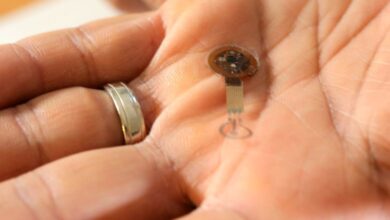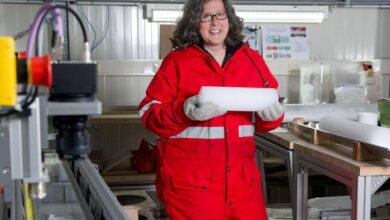The O.G. of Tech Startups Says AI Changes Everything

Steve Blank came of age as an entrepreneur in Silicon Valley in the 1970s, when it was truly about the silicon, and by the 1990s he had founded or worked at four high-tech startups. He eventually drew on this experience to create a model of developing customers inspired by the scientific method; it calls for working up various hypotheses, then testing and iterating on them. This model became the foundation upon which the lean startup movement was built, with its “minimum viable product,” “pivot,” and other concepts that have entered the mainstream lexicon.
Now Blank, who teaches entrepreneurship at
Stanford University, is thinking about how artificial intelligence tools are poised to transform his lean startup method—by supercharging the process of testing hypotheses, developing novel products, and creating businesses with a speed that humans could never match.
How will AI and machine learning affect entrepreneurship, innovation, and R&D?
Blank: I’ve been stunned, actually, that [Lean Startup] turned out not to be a fad, but truly foundational principles on how to build stuff. There’s been hundreds of iterations on it—but it comes back to hypothesis testing, minimum viable products, et cetera.
It’s not hard to imagine this being automated by AI: In the morning, I could create 100 digital archetypes of customers and populate a website with 1,000 images of a product they might like. By the afternoon it could run A/B testing with thousands of virtual tests. The foundational ideas are the same—but when a machine runs it, versus a human being? You ain’t seen nothing yet.
How do you envision the collaboration between human inventors and AI evolving?
Blank: The scientific method is a 500-year-old approach that until now has been conducted by human beings. The next breakthrough might be when we give those problem sets to machinery, and they start having insights about invention that human beings would never have seen. We’re starting to see some of that, in everything from electronic design automation to computational fluid dynamics—ways to approach problems that just hadn’t been invented yet.
I always come back to AlphaFold [an AI system from Google DeepMind that
computationally predicts protein structures]. In 75 years we figured out 10,000 protein structures; AlphaFold has figured out 200 million. If it were human, it would have won a Nobel Prize.
What advice would you give to inventors looking to integrate AI into their creative processes?
Blank: My advice for anyone in any part of their career is: Every six months, spend three days looking at the state of the art for the tools in and around your space. The delta rate of change is still increasing, and it’s likely that one [advance] will intersect with your domain. Now, this might be positive or negative, but you should not be surprised. Every six months, it’s not going to look like the last six months.
How should entrepreneurs and inventors think about reinventing their roles in the age of AI?
Blank: If I were still an entrepreneur, I’d be building enterprise software—the equivalent of an SAP or Salesforce that does lean [startup] principles end to end. At first it would be human-aided machine learning, and after a while, you probably wouldn’t even need a human other than someone to spit out a result to. We’re seeing [AI] automatically generating websites and code. Just imagine using it to string the lean methodology together.
I love to show people this photo from the 1920s: a roomful of men reading calculating machines to compute actuarial tables at an insurance company. You know what that room looks like now? Nothing. It doesn’t exist. Yet we didn’t suffer mass unemployment. People’s jobs just changed. That’s why I tend to be optimistic. Programmers will become prompt engineers; protein designers will start working on more complicated things. We’ve replaced a lot of these high-value jobs in the past, and the world did not end.
IEEE Spectrum




